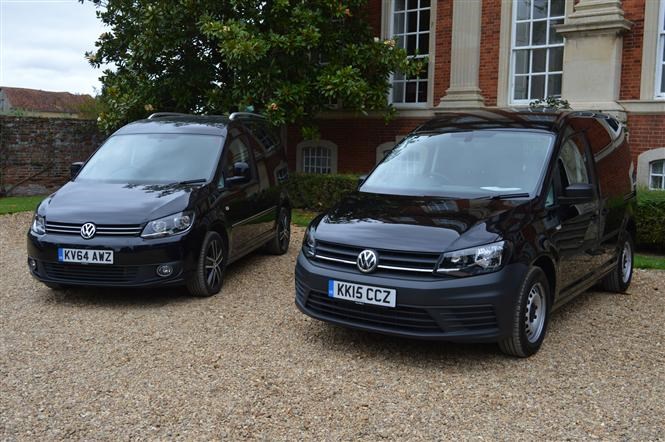After 12 years on the market, Volkswagen finally took the decision to replace the aging third generation Volkswagen Caddy with the all new Caddy in late 2015. Rather than a complete redesign for each generation, Volkswagen prefers to make multiple subtle changes which may leave you questioning ‘what am I getting for my money’?
In this article, we compare the outgoing with the incoming Volkswagen Caddy, to see what the differences are, and if it’s worth parting with the extra cash.
Exterior styling
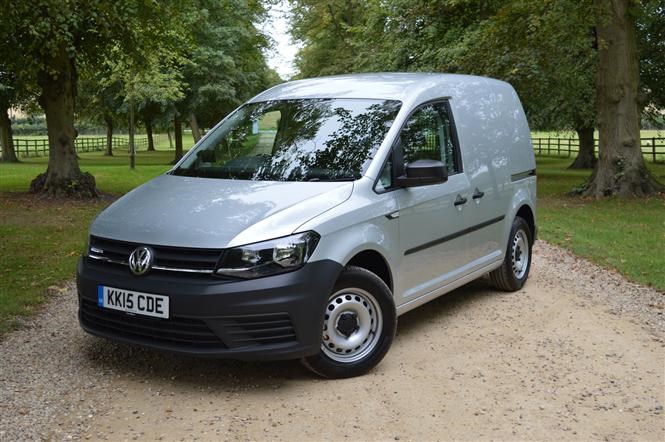
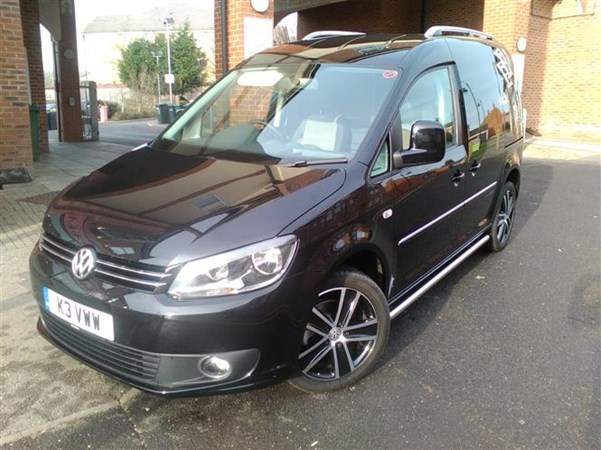
From the outside, it’s very difficult to tell the vehicles apart. As you may well have guessed, very little has changed past the B-Pillar and the few changes that have been made to the front are small and subtle.
The lights, grille, bonnet, bumper and side panels are completely new components but share a very similar design to those of the previous generation. The bumper and grille are bigger and more prominent, as are the contours on the bonnet.
In the cab
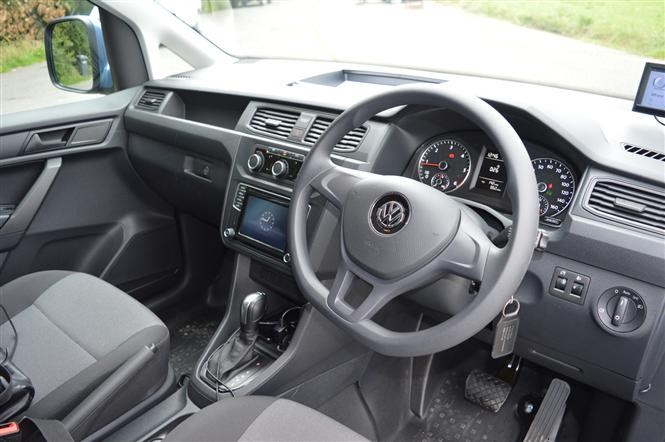
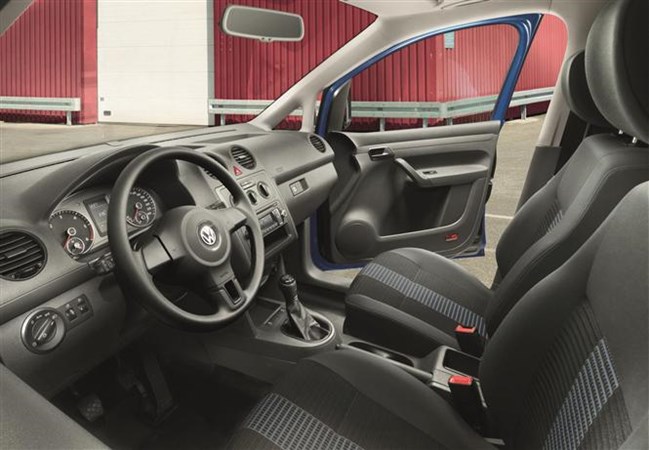

While very little separates the two models in terms of space and comfort, the style and design of the new dashboard is far more modern and formal. There are also a similar number of cubby holes and storage compartments.
An impressive DAB+ radio system with Bluetooth connectivity and a five-inch touchscreen display is now a standard feature on the base model. The new optional Discover Navigation system is a lot more responsive than the previous system.
High mileage operators will be pleased to know that Adaptive Cruise Control (operable up to 100mph) is an option of the new Volkswagen Caddy, and dramatically reduces the stress of speeding up and slowing down in motorway traffic.
On the road
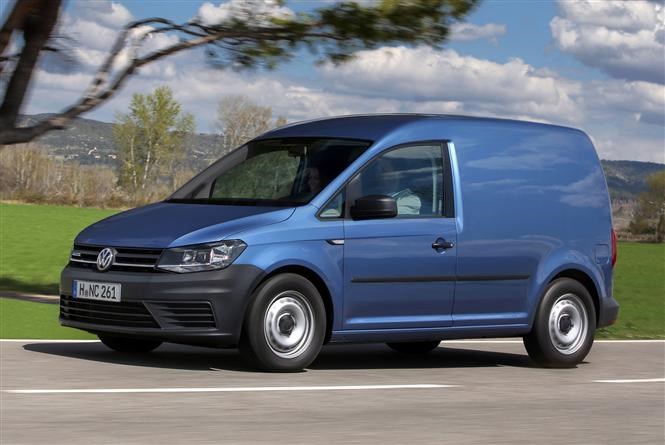
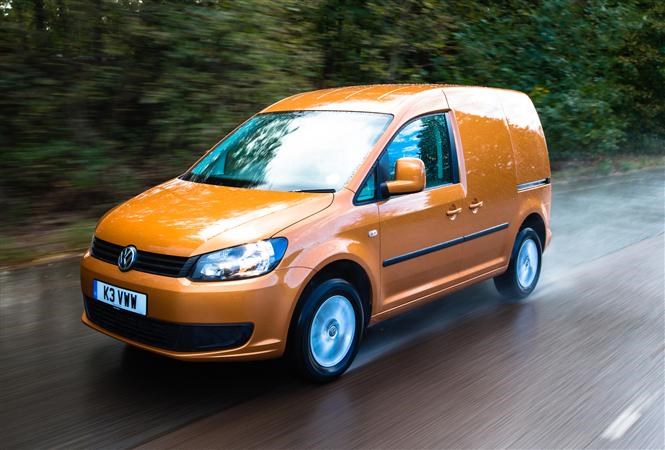
Volkswagen’s acclaimed 2-litre TDi unit continues to power the Volkswagen Caddy, although the 1.6-litre has been dropped. To replace it, Volkswagen is offering reconfigured outputs of 74bhp and 101bhp on the 2-litre.
The ride and handling is much improved, with less roll in the corners and the steering wheel feeling more accurate and connected. The refinement has also improved with less road and engine disturbance than the previous generation.
Safety
One of the biggest improvements has been to the level of safety systems. As we move in the ‘semi-autonomous’ driving age, the new 2015 Volkswagen Caddy has been fitted with new systems like Front Assist with City Emergency Braking, which brakes automatically if the driver fails to see an obstacle below the speed of 19mph.
Other new safety systems include Multi-Collision Brake System, which automatically initiates braking if the driver is no longer able to take action due to an injury sustained in the initial collision. Other options which are now available include the ‘Light Assist’ (automatically dips the headlights’ full beam when approaching another vehicle at night) and ‘Driver Alert’ (suggests a break to the drive if performance varies) systems.
Cost of Ownership
Prices haven’t increased that much, with the outgoing model costing £13,210 and the new one priced from £13,500. However, there are a number of deals on the outgoing model on Parkers Vans starting from £10,000 for ex-demo and delivery mileage vehicles.
Fuel economy was a major sticking point for the previous generation, but the engineers at Volkswagen have reconfigured the engine so that it achieves up to 65.7mpg on the combined cycle, compared with a maximum of 53.3mpg on the Volkswagen Caddy C3.
For the first time, Euro-6 is now an option on the new Volkswagen Caddy. Although there aren’t many advantages for Euro-6 yet, it should be able to give you access to the proposed Ultra-Low Emission Zone and if van tax is reformed, there could be financial benefits too.
Although the final residual values are yet to be released, newer models tend to depreciate less than older models. Having said that, due to the little difference in between the models and the fact that the Volkswagen Caddy is the most sought after small van, residual values shouldn’t be too dissimilar.
Load Area
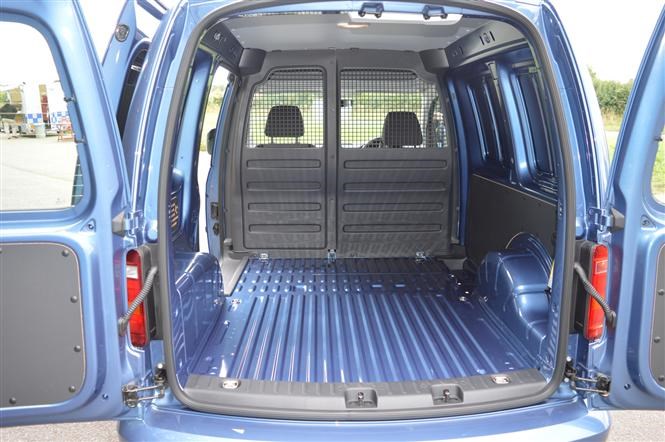
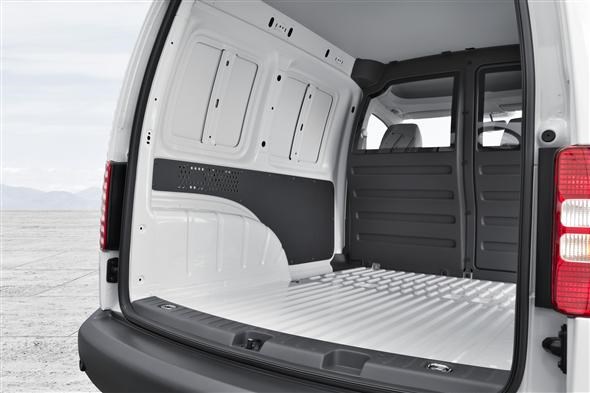
Parkers Vans was disappointed to discover that there were only a few superficial alterations to the Volkswagen Caddy past the B-Pillar, therefore the new model retains the same load space dimensions as the previous generation.
The 1,170mm width between the wheelarches means that Euro pallets have to be loaded length ways, although the 1,823mm load height is fairly respectable. There are two load lengths (1,781mm and 2,250mm) which correspond to load volumes of 3.2 and 4.2 cubic metres.
One area where there has been improvement is payload. To compete with newer and heavier small vans like the Ford Transit Connect and the Fiat Doblo Cargo, Volkswagen has also increased its stakes to more than one tonne too. On the Volkswagen Caddy Maxi, the payload is now 1,005kg including the driver, up from around 857kg.
Summary
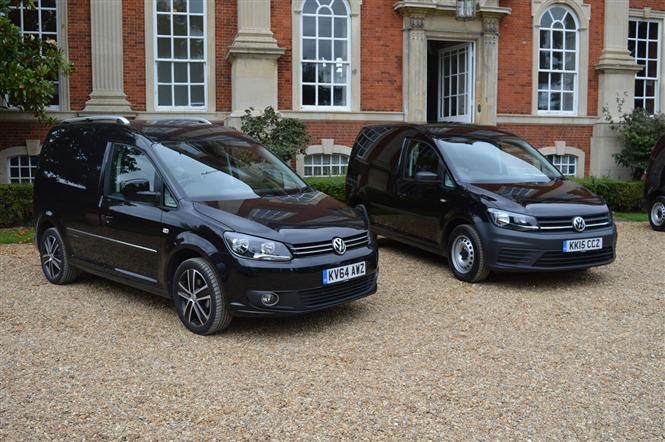
Volkswagen is billing its new Caddy as a completely new generation model, but we disagree. Despite the new safety and driver assist systems, the new dashboard, and new panelling at the front, very little has changed – including the price.
If you’re ordering a new vehicle, we’d recommend going with the newer version as it doesn’t cost that much more. However, if you’re not too fussed about all the latest mod cons and want a cheap and productive workhorse, check out Parkers Vans For Sale for some ‘end of stock’ deals.
Just so you know, we may receive a commission or other compensation from the links on this website - read why you should trust us.


